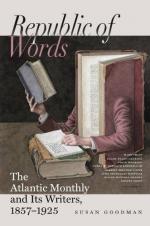Of the Greenland route, Doctor Hayes, the well-known Arctic traveller, expresses himself in the most decided manner, that it is wholly impracticable. He says it must be obvious that the ice which hugs the Greenland coast will prevent a cable, if laid, from remaining in continuity for any length of time. Doctor Wallich, naturalist attached to Sir Leopold McClintock’s expedition to survey the Northern route, considers it impracticable on account of the volcanic nature of the bottom of the sea near Iceland, and the ridges of rock and the immense icebergs near Greenland.
The main argument in favor of this route, in preference to the more direct one across the Atlantic, is, that it would be impossible to work in one continuous circuit a line so long as that from Newfoundland to Ireland. This would seem to be answered sufficiently by the success of the old Atlantic cable. But it is alleged that it worked slowly and with difficulty, which is true, and hence it is thought that the distance would be at least a very great obstacle. But we have shown, that, practically, by the increased size of the conducting-wire, the new cable has been reduced in length four-fifths, and will work five times as fast as the old one. The cable extending from Malta to Alexandria is fifteen hundred and thirty-five miles long, and the whole of this line can be worked through without relay or repetition in a satisfactory manner, as regards both its scientific and commercial results, and with remarkably low battery-power. The Gutta-Percha Company, which made the core of this cable, says that a suitably made and insulated telegraph-conductor, laid intact between Ireland and Newfoundland, can be worked efficiently, both in a commercial and scientific sense, and they are prepared to guaranty the efficient and satisfactory working of a line of the length of the Atlantic cable as manufactured by themselves, and submerged and maintained in that state.
It can be shown by the testimony and experience of those most eminent in the science and practice of oceanic telegraphy, that neither length of distance, within the limits with which the Atlantic Company has to deal, nor depth of water, is any insuperable impediment to efficient communication by such improved conductors of electricity as are now proposed to be laid down. All those who are best able to form a sound opinion, from long-continued experimental researches on this particular point, are willing to pledge their judgment, that, on such a length of line as that between Ireland and Newfoundland, and with such a cable and such improved instruments as are now at command, not less than twelve words per minute could be transmitted from shore to shore, and that this may be done with greatly diminished battery-power as compared with that formerly used.
I think I have shown by facts, and not theory merely, that the Atlantic cable can and will be successfully laid down and worked, thus supplying the long-needed link between the three hundred thousand miles of electric telegraph already in operation on the opposite shores of the Atlantic.




